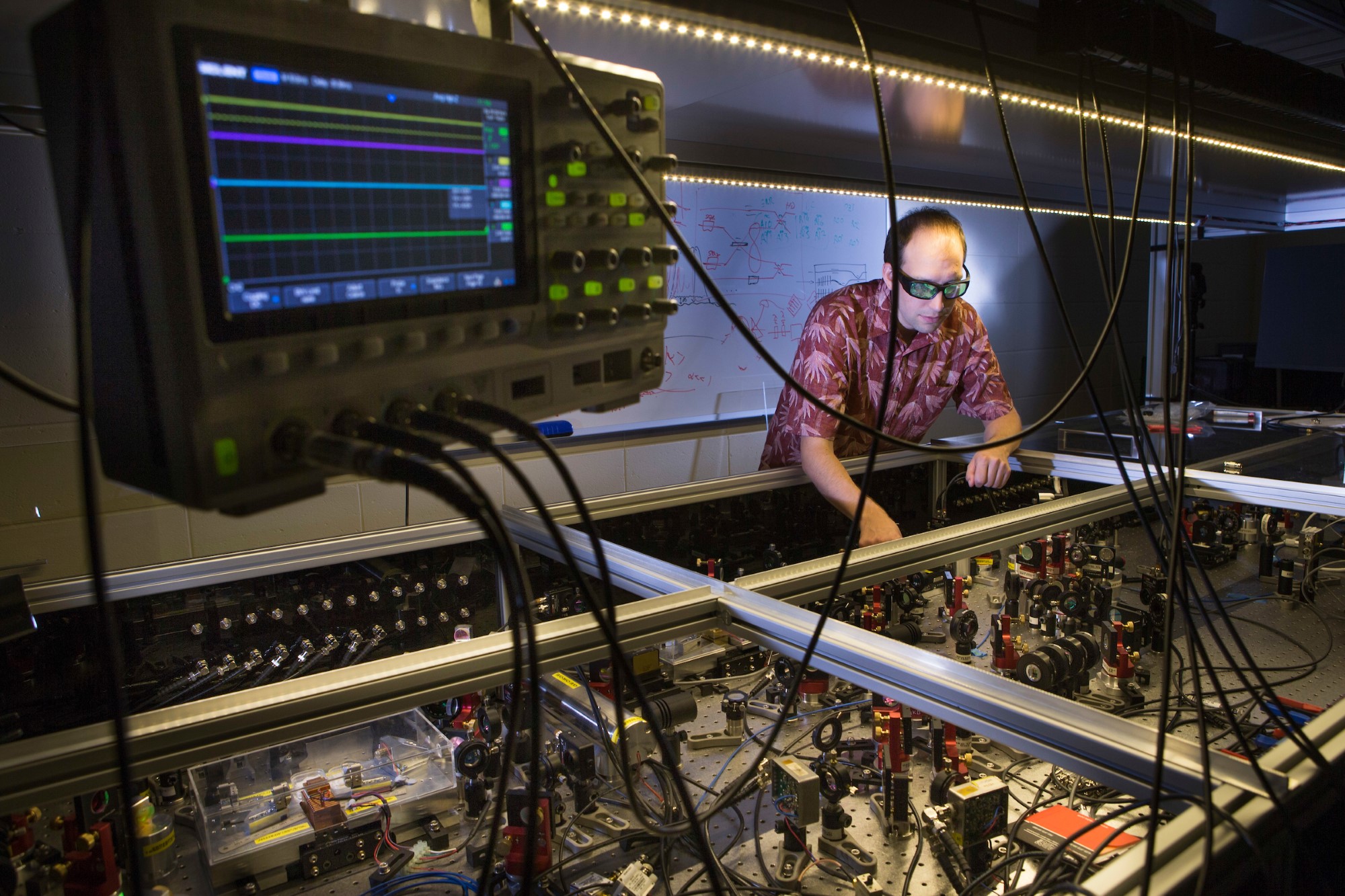
Research projects
Discover the forefront of astronomy and astrophysics through our projects, ranging from deep-space communication systems to groundbreaking adaptive optics. Explore our diverse, ongoing research initiatives shaping the future of space science.
Displaying 1 - 15 of 31 project(s).
This project will use observations of star clusters with the Hubble Space Telescope to disentangle the multi scale nature of star formation in local spiral galaxies.
Theme
- Stellar and planetary astronomy
Student intake
Open for Honours students
Observatory
People
- Dr Kathryn Grasha, Supervisor
- Professor Mark Krumholz, Supervisor
This project will use observations of star clusters with the Hubble Space Telescope to disentangle the multi scale nature of star formation in local spiral galaxies.
Theme
- Stellar and planetary astronomy
Student intake
Open for Honours students
Observatory
People
- Dr Kathryn Grasha, Supervisor
- Professor Mark Krumholz, Supervisor
A new search for strong gravitational lenses in the MAGPI survey
Theme
- Structure and evolution of the Cosmos
In this project we will use data-driven methods to obtain a large abundance census of dwarf galaxies using low-quality data previously not tapped into, to learn how galaxy properties connect to abundance distributions.
Student intake
Open for PhD students
People
- Dr Claudia Reyes, Supervisor
- Professor Melissa Ness, Supervisor
In this project we will use data-driven methods to obtain a large abundance census of dwarf galaxies using low-quality data previously not tapped into, to learn how galaxy properties connect to abundance distributions.
Student intake
Open for PhD students
People
- Dr Claudia Reyes, Supervisor
- Professor Melissa Ness, Supervisor
The Australian Plasma Thruster (APT) will help deep-space probes travel for longer and further into space and be used to de-orbit satellites at the end of their lifetimes. The engine of the thruster will be based on ANU Professor Christine Charles's Helicon Double Layer Thruster (HDLT), which is the first of its kind in the world.
Theme
- Instrumentation
The Gaia mission has revolutionised our understanding of the Milky Way halo, but the biggest discoveries, which rely on individual abundances, are yet to be made.
Student intake
Open for PhD students
Observatory
People
- Dr Claudia Reyes, Supervisor
- Professor Melissa Ness, Supervisor
The Gaia mission has revolutionised our understanding of the Milky Way halo, but the biggest discoveries, which rely on individual abundances, are yet to be made.
Student intake
Open for PhD students
Observatory
People
- Dr Claudia Reyes, Supervisor
- Professor Melissa Ness, Supervisor
The kinematics and morphology of typically massive disk galaxies has changed dramatically over the last ~9 Gyrs.
Theme
- Structure and evolution of the Cosmos
Student intake
Open for Honours, PhD students
Observatory
People
- Associate Professor Emily Wisnioski, Supervisor
Data archives
Theme
- Black hole phenomena
- Galactic archaeology
- Instrumentation
- Stellar and planetary astronomy
- Structure and evolution of the Cosmos
To investigate the role of mergers with smaller galaxies in shaping our Milky Way by using the data from stellar surveys and cosmological simulations of the NIHAO suite to identify stellar remnants of galaxies that merged with the Milky Way and explain their role in building the main components of the Milky Way.
Theme
- Galactic archaeology
- Structure and evolution of the Cosmos
Even from our telescopes on the tops of high mountains, the Earth’s atmosphere blurs observations reducing their clarity.
Theme
- Instrumentation
People
- Professor Robert Sharp, Researcher
This project will deliver a benchmark sample of stellar abundances for galactic archaeology for hundreds of thousands of stars.
Student intake
Open for PhD students
Observatory
People
- Dr Claudia Reyes, Supervisor
- Professor Melissa Ness, Supervisor
This project will deliver a benchmark sample of stellar abundances for galactic archaeology for hundreds of thousands of stars.
Student intake
Open for PhD students
Observatory
People
- Dr Claudia Reyes, Supervisor
- Professor Melissa Ness, Supervisor
This research project employs the WiFeS spectrograph on the ANU 2.3m telescope at Siding Spring to measure nebular chemical abundances in isolated gas-rich dwarf galaxies in the Local Volume.
Theme
- Structure and evolution of the Cosmos
